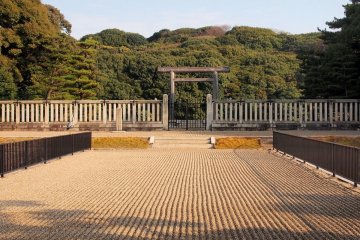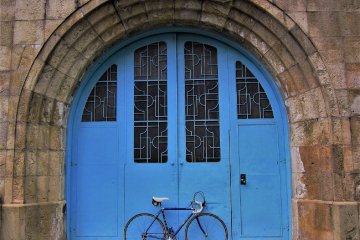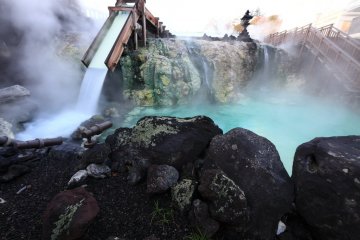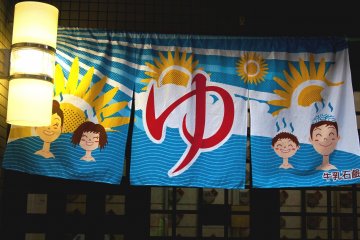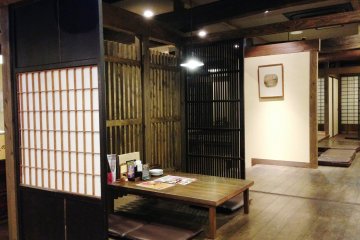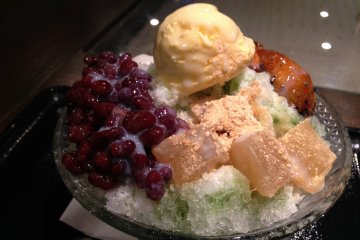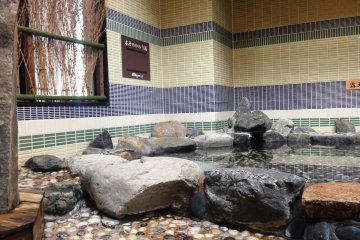From Beppu to Bath, Rome to Stockholm, these are the centres of wellness, the well spring of healing waters. On the other hand, have you heard of relaxation in Japan’s merchant capital, Osaka? There is a saying, work hard and play hard. They certainly work hard here, so like the first gulp of beer after a hard day, the first dip in the sento (public bath) or onsen (hot springs) after work is a moment of bliss.
Many hotels have their own sento or spa. While Dormy Inn Premium has a well equipped indoor soaking bath and outdoor rotenburo, it is the neighbourhood sento, or community bath houses, where you can see the real Osaka come out to relax. Nobeha no yu, in suburban Tsuruhashi has the added bonus of Akasuri, a body scrub with Korean origins, a no-nonsense neck-to-toe cleanse that leaves you refreshed, if not a little red. By removing dead skin and opening clogged pores, it improves circulation and complexion. It is a body massage and deep cleanse in one, improving your immunity and cleansing your body inside and out. So popular is this value-for-money treatment, it can be booked out hours in advance, especially on an evening, so while you are waiting, try the other facilities here, including the outdoor rotenburo baths or the dining facilities. Alternatively, an afternoon visit is recommended without the crowds.
Even if you don't see yourself as a wellness guru, you may be in need of some relaxation, especially after a 12-hour flight from Los Angeles or Auckland. Closer to Kansai Airport, there are many bathhouses that will restore your humanity, a perfect way to relieve your aches and your jet-lagged brain in the early hours in the morning.
As many hotels are not available to check in until the afternoon, a reinvigorating spa or onsen in the morning near your hotel or airport may be just what the doctor ordered. And it isn't exactly de rigeur to take a nap in these sentos many have daybeds and tatami rooms that are just waiting for your aching body.
Kansai Airport Onsen Hotel Garden Palace
Open from 5 am, with a break between 13:00 and 15:00, they cater for both early and late arrivals, as well as a good spot to relax before your flight home. As the name suggests, there are garden views to soothe your eyes, as well as a sauna. They also supply shampoo, conditioner, and body soap, and you can bring or buy a small towel. There is also a basic but comfortable hotel on site, with a pickup and drop-off service to Kansai Airport, Rinku Premium Outlets, and nearby train stations.
OMO Kansai Airport (Rinku Town)
An even more convenient sento for airport hotel guests has just opened in 2023. Just one stop away from Kansai Airport Railway Station, this hotel has a sauna, indoor and outdoor baths, and an introductory rate of 4,500 yen per single hotel room.
Solaniwa Sky Garden
If the thought of communal bathing is daunting, the private baths here are a godsend, and you can rent them by the hour. They have akasuri as well. Solaniwa is conveniently located on the loop line a few stops before Osaka City in Bentencho, but is pricey at ¥2,400 per day.
Kame no Yu
Named after the turtle, the Japanese symbol for longetivity, this could be your first stop after arriving in Japan. Conveniently located between Kansai Airport and Osaka about ten minutes walk east of Mukunigaoka on the Airport Line, this modern indoor and outdoor sento retains a local neighbourhood feel. Taking a bath here will help you with muscle pain and joint stiffness. They also have special promotions on the Line app, such as a mint bath in winter.
Winter rituals
Today is midwinter, or the winter solstice. In ancient times, when the cold can be debilitating, people would take a bath with yuzu, a Japanese citrus to ward off the cold.
It is the shortest day of the year, one that binds the old and the new years, and the arrival of spring. While it isn’t a public holiday, it remains a special day in the hearts of many people. It is nature’s way of saying the old has gone, and new has come. Newness, or birth, is closely associated with Shinto, while the passing away of the old with Buddhism in Japan. So in many ways Winter solstice is a turning point in the year for many Japanese.
Historically, Shinto is closely tied to the Agricultural cycle, e.g. planting and harvests, and so in many ways it is tied to nature’s calendar, that of spring, summer, autumn and winter. As such, winter solstice, or the shortest day of the year, or when the days reach a turning point from short to long again, is a key part of nature that Japanese people observe. It may not be obvious in the big cities, but in the farms and orchards of the countryside, it takes on an added significance, far beyond agriculture. it is about the cycle of life, of birth and rebirth.
By partaking in a bath, you become one with the people and traditions of Japan for thousands of years, and what better way to do this than to take this ritual or communion together with the young and old of Osaka. Stripped out all pretension and clothes, in the form that you were created, there is only you and the water that cleanses and heals you, and revitalises you for the year ahead.



